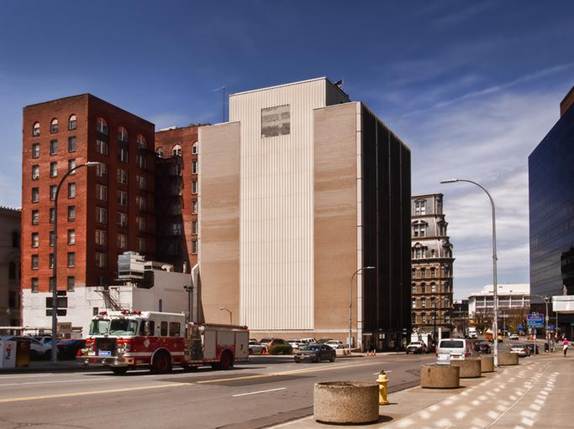
What to Do Right After an Accident in Rochester, NY
Accidents in Rochester can turn an ordinary day upside down. Between the snow, tight intersections, and fast-changing road conditions, crashes are part of what local drivers face all year long. It's easy to feel overwhelmed in those first few moments. Your heart’s racing. Your mind’s spinning. But what you do next can protect not only your safety, it can also shape the outcome of your recovery, your health, and even your financial future.

Step 1: Ensure Immediate Safety
The first priority is always safety. Your own, and that of the people around you.
Check yourself and your passengers for injuries. Even small cuts or pain should be noted. If you're physically able to move, try to help others out of harm’s way, but only if it’s safe.
- If your car can still drive, move it to the shoulder or a nearby parking area.
- Turn on hazard lights immediately.
- If you have cones, flares, or triangles in your trunk, place them to alert oncoming traffic.
- Stay inside the vehicle if you’re in the middle of a busy road or near fast-moving traffic.
Especially during icy Rochester winters, roadside hazards can lead to secondary crashes on roads like I-490 or Lake Avenue. Staying calm and focused helps avoid another emergency.
Step 2: Call 911 Right Away
Even for what seems like a small fender bender, call 911. It’s not an overreaction. It’s the law in many cases, and it ensures help gets to you fast.
Monroe County dispatchers will send police, fire, or EMTs depending on what you report. Be as clear and steady as you can. You'll want to give them:
- The exact location (intersection, nearby business, mile marker).
- The number of vehicles involved.
- Whether anyone seems injured, even if it's minor.
- Any potential hazards (fire, traffic blockages, fluids leaking).
Stay on the line until the dispatcher says you can hang up. They'll guide you if anything changes or if additional help is needed.
Step 3: Check on Others and Prevent Further Harm
Once you’re safe and help is on the way, check on others. Approach carefully — there could be broken glass, fire risk, or fuel leaking. In some parts of the city, like East Main or Lyell Avenue, traffic can back up fast and create new dangers.
If someone appears badly hurt, do not try to move them unless there’s an immediate threat like fire. Instead, offer reassurance and wait for paramedics. If you’re trained in basic first aid and it’s safe to act, you may provide assistance.
A calm voice and clear direction can go a long way here. Your stability can make others feel safer too.
Step 4: Exchange Information with Involved Parties
Now it's time to gather the right details. Keep this interaction polite and short. You don’t need to hash out what happened or speculate about blame.
Here's what you’ll need:
- Full names, phone numbers, and addresses
- Driver’s license numbers and license plate info
- Insurance company name and policy number
- Make, model, color, and visible damage on all vehicles
It’s fine to use your phone to jot things down or take photos of documents. Just don’t post any of it online. And remember: never say “I’m sorry” or accept fault, even if you think you contributed. Let the professionals review the facts first.
Step 5: Document the Scene Thoroughly
Think of yourself as the first investigator. What you capture now might matter a lot later.
Take photos or videos of:
- Vehicle positions, damage, and interior condition
- Roadway layout, skid marks, signage, and signal lights
- Any weather conditions (slush, ice, fog)
- Injuries to yourself or others
- Hazards like blocked drains or fallen branches
Also, collect witness names and contact numbers. Ask the responding officer for their name and badge number, and note the accident report number they’ll file. This is your proof — and it helps insurance and attorneys build a clearer picture later.
Step 6: File a Police Report
In Rochester, officers typically respond to crashes involving injuries or significant damage. If they’re called to the scene, they’ll file an official report.
But in cases where police don’t arrive, like minor damage or no injuries, you’ll need to fill out the MV-104 Accident Report. This form goes to the New York State DMV, and you must submit it within 10 days if damages exceed $1,000.
An official report helps:
- Support your insurance claim
- Document injuries or property loss
- Establish timelines if you pursue a legal case
Don’t skip this step. It’s one of the most important things you can do.
Step 7: Seek Medical Attention Even If You Feel Fine
You might feel “okay” right after a crash. That doesn’t mean you’re in the clear.
Soft tissue injuries like whiplash, concussions, or internal trauma may not show symptoms for hours, sometimes even days. That’s why it’s so important to see a doctor as soon as possible.
You have several options in Rochester:
- Strong Memorial Hospital and Rochester General Hospital offer full-service emergency care
- Unity Hospital and area urgent care clinics can treat moderate injuries
- Your primary care doctor can document follow-up exams and refer you to specialists
Save every record, from discharge notes to prescriptions. These documents prove you took the crash seriously and sought proper treatment.
Step 8: Notify Your Insurance Company
Don’t wait too long to make that first call. Most policies require you to notify your insurance company shortly after the crash.
Stick to the facts:
- Where and when it happened
- Who was involved
- What kind of damage or injuries occurred
- Copies of the police report, photos, and medical assessments
Avoid guessing about what caused the crash or saying anything about fault. Just provide accurate information and let the investigation run its course.
Step 9: Understand New York’s No-Fault System
New York uses a no-fault auto insurance system. That means after an accident, each person’s own insurance pays for their medical expenses and some lost wages, regardless of who caused the crash.
But there are limits.
If you suffer what New York law defines as a “serious injury” — like a broken bone, significant disfigurement, or permanent limitation — you may step outside the no-fault system and bring a claim against the other driver.
If you’re unsure about your options, a local Rochester accident attorney can help review your case and explain what’s possible under Rochester’s accident laws.
Step 10: Arrange Vehicle Towing or Repairs
If your car can’t be driven safely, the police can request a tow truck. You also have the right to contact your preferred service — just be sure they’re licensed and reputable.
Before the car gets hauled away:
- Remove personal belongings, if it’s safe
- Take additional photos of the interior and damage
- Ask where the vehicle is being taken (garage, impound, or repair shop)
You can choose a local body shop in Monroe County or one approved by your insurance company. Ask if parts are OEM or aftermarket, and how long the repair might take.
Step 11: Follow Up on Health and Recovery
Healing doesn’t always follow a straight line. After a car crash, soreness, tension, or emotional stress may show up later.
Schedule follow-up visits with your doctor. If you experience neck pain, headaches, or mobility issues, consider a physical therapy referral. Rochester has excellent rehabilitation providers like:
- UR Medicine Physical Therapy
- Lattimore Physical Therapy with multiple area locations
Also, keep a daily record of:
- Pain levels and any new symptoms
- Medications you take
- Missed workdays or changed routines
This documentation helps with any ongoing claims and supports your recovery.
Step 12: Know Your Legal and Support Options
Not every accident requires a lawsuit, but when injuries, financial stress, or liability questions come up, you deserve support.
Legal help in Rochester includes:
- Monroe County Bar Association’s Lawyer Referral Service
- Victim Assistance Program (VAP) for those emotionally affected by serious crashes
Understanding your rights matters. Whether it's getting compensation for damages or appealing an insurance denial, legal guidance can give you clarity during a tough time.
Step 13: What to Avoid After an Accident
Some missteps can make an already stressful situation worse. Here’s what not to do:
- Don’t leave the scene, even if the damage looks minor — you could face charges for hit-and-run
- Don’t post photos or details about the crash on social media
- Don’t make on-the-spot deals or admit to anything before gathering facts
Staying cautious and focused keeps you protected legally and emotionally.
Final Thoughts: Stay Prepared, Stay Safe
Crashes happen. What you do afterward makes the difference. Staying safe, documenting everything, and seeking medical care aren’t just smart, they’re essential steps toward healing.
If you live or drive in Rochester, keep local emergency contacts in your phone. Know the quickest routes to places like Strong or Unity Hospital. Keep a safety kit in your trunk. With just a bit of preparation, you can turn a chaotic situation into one you’re ready for.

What Sets Us Apart From The Rest?
Horn Wright, LLP is here to help you get the results you need with a team you can trust.
-
Client-Focused ApproachWe’re a client-centered, results-oriented firm. When you work with us, you can have confidence we’ll put your best interests at the forefront of your case – it’s that simple.
-
Creative & Innovative Solutions
No two cases are the same, and neither are their solutions. Our attorneys provide creative points of view to yield exemplary results.
-
Experienced Attorneys
We have a team of trusted and respected attorneys to ensure your case is matched with the best attorney possible.
-
Driven By Justice
The core of our legal practice is our commitment to obtaining justice for those who have been wronged and need a powerful voice.

